COSMOSIL 1.8C18-MS-II (Sub-2 micron porous silica for UHPLC)
Sub-2 micron porous silica for UHPLC / Stable lot-to=lot quality and superior separation
Our UHPLC columns include COSMOSIL 1.8C18-MS-II, made with fully porous silica, and COSMOCORE 2.6C18, made with core-shell silica. Users should choose the appropriate column based on their instrument and analysis requirements. This pamphlet lists some characteristics of each column.
|
Fully porous silica
(COSMOSIL 1.8C18-MS-II)
|
Core-shell silica
|
|
| Pore size | about 12 nm | about 9 nm |
|
Specific surface area
|
about 340 m2/g
|
about 150 m2/g
|
| Max. pressure | 80 MPa | 60 MPa |
| Usable pH range | 2-10 * | 2-10 * |
|
Because the fully porous silica has pores throughout its structure, it can interact with the sample over a very wide surface area. As the amount of octadecyl phase that can be bonded increases, hydrophobic samples can be retained longer, leading to improved separation. |
With core-shell silica’s nonporous core, sample dispersion is reduced; compared to fully porous columns, high theoretical plate numbers can be achieved even with larger particles. These larger particles result in lower backpressure, enabling use on conventional HPLC instruments. |
*Silica gel columns are generally recommended to be used within pH 2–7.5. Outside this range, column degradation may happen more quickly.
Comparison of fully porous and core-shell columns
UHPLC columns exhibit very high numbers of theoretical plates, so good separation can be achieved even on short columns.
Retention of alkylbenzenes
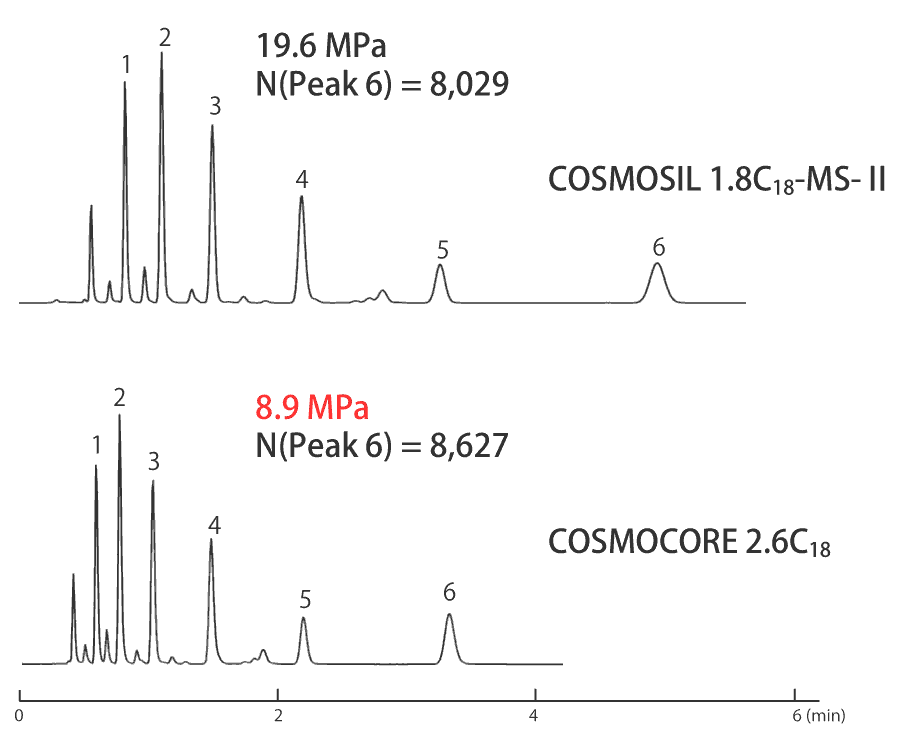
| Column size: | 2.1 mmI.D. x 50 mm | |
| Mobile phase: | Acetonitrile : Water = 60 : 40 | |
| Flow rate: | 0.4 ml/min | |
| Temperature: | 40°C | |
| Detection: | UV 254 nm | |
| Sample: |
1. Benzene (n=0)
2. Toluene (n=1)
3. Ethylbenzene (n=2)
4. Propylbenzene (n=3)
5. Butylbenzene (n=4)
6. Amylbenzene (n=5)
|
 |
Separation of structural isomers of vitamin D
COSMOSIL 1.8C18-MS-II has strong retention and selectivity for hydrophobic compounds, so it can separate these structural isomers of vitamin D. The C18-MS-II series has particle sizes of 1.8, 2.5, 3, 5, and 15 µm available, so scaling up to preparative separation is a smooth process.
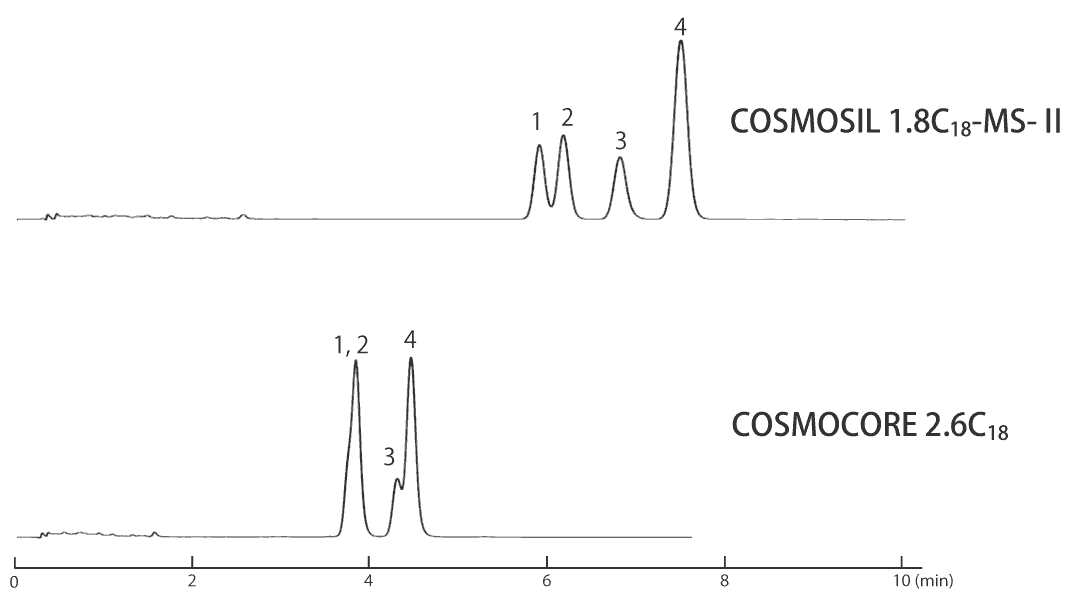
| Column size: | 2.1 mmI.D. x 50 mm | |
| Mobile phase: | Methanol : Water = 90 : 10 | |
| Flow rate: | 0.4 ml/min | |
| Temperature: | 40°C | |
| Detection: | UV 265 nm | |
| Sample: |
This sample was prepared by mixing the below in a 1:3 ratio:
|
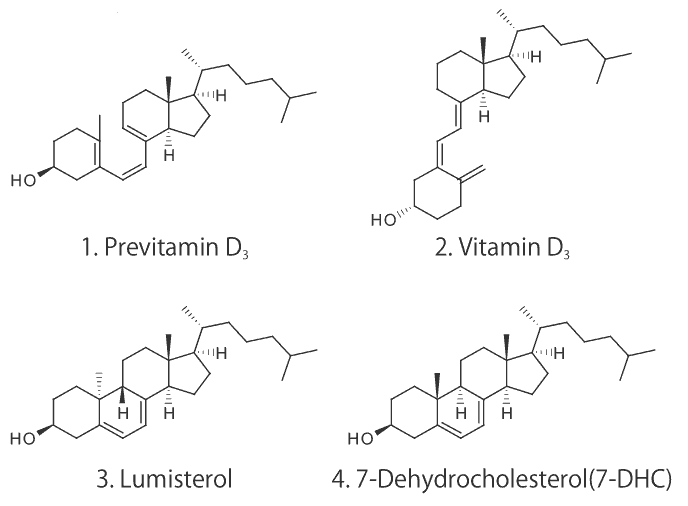 |
Comparison to competitor columns
COSMOSIL 1.8C18-MS-II and COSMOCORE 2.6C18 were compared to a competitor UHPLC column. COSMOSIL 1.8C18-MS-II, with its high retention for hydrophobic compounds, is able to separate compounds that the competitor column was not able to separate. COSMOCORE 2.6C18 is similar in retention and selectivity to the competitor column, but ran with less than half the backpressure.
Drug analysis (NSAIDs)
COSMOSIL 1.8C18-MS-II, with its high hydrophobicity and selectivity, was able to separate difficult compounds.
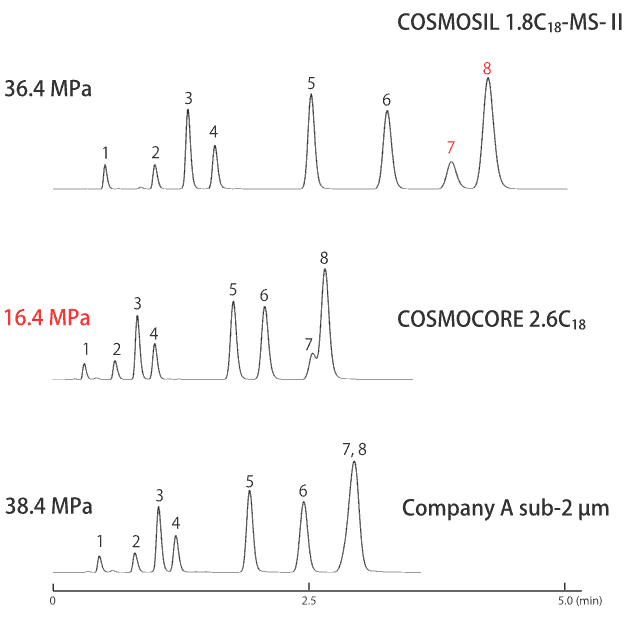
| Column size: | 2.1 mmI.D. x 50 mm | 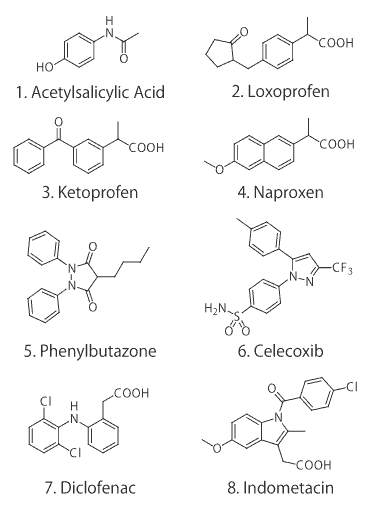 |
| Mobile phase: | Methanol : 0.1%HCOOH aq. = 60 : 40 | |
| Flow rate: | 0.4 ml/min | |
| Temperature: | 40°C | |
| Detection: | UV 260 nm | |
| Sample: |
1. Acetylsalicylic Acid
2. Loxoprofen
3. Ketoprofen
4. Naproxen
5. Phenylbutazone
6. Celecoxib
7. Diclofenac
8. Indometacin
|
Flavonoid analysis
Compared to isocratic elution, in this gradient elution, the differences in retention time between the columns was small, and elution order was the same. However, COSMOSIL 1.8C18-MS-II and COSMOCORE 2.6C18 were still able to separate compounds that were not separated on the competitor column.
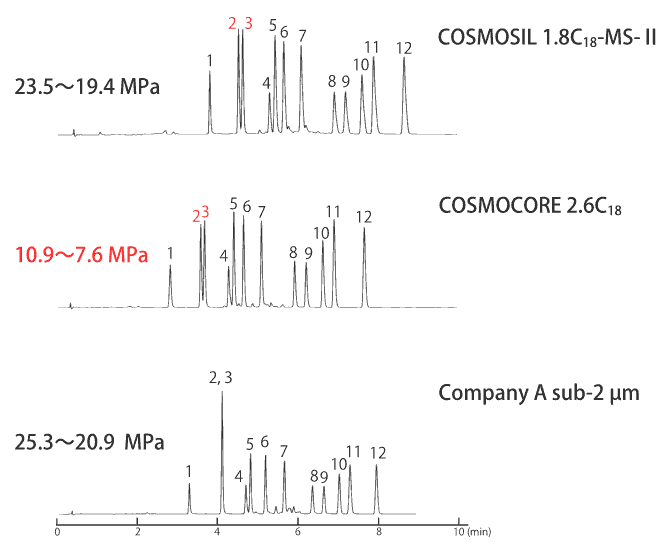
| Column size: | 2.1 mmI.D. x 50 mm | 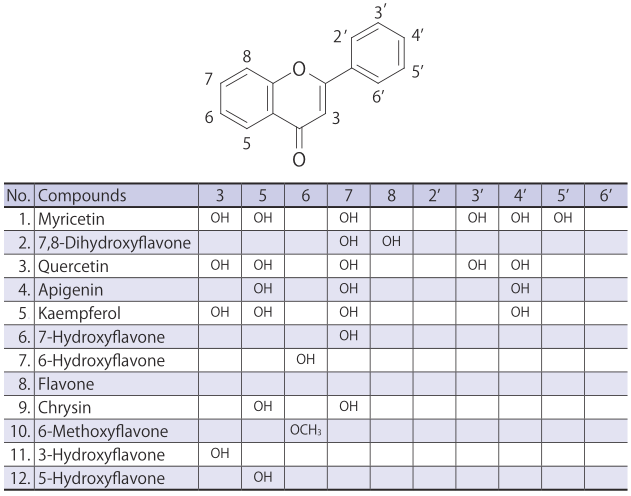 |
| Mobile phase: | A : 0.1% formic acid in water B : 0.1% formic acid in acetonitrile B conc. 10 → 70% 10 min. linear gradient |
|
| Flow rate: | 0.4 ml/min | |
| Temperature: | 40°C | |
| Detection: | UV 280 nm | |
| Sample: |
1. Acetylsalicylic Acid
2. Loxoprofen
3. Ketoprofen
4. Naproxen
5. Phenylbutazone
6. Celecoxib
7. Diclofenac
8. Indometacin
(Inj. vol.: 1.0 µl)
|
Durability of UHPLC columns
UHPLC columns are routinely exposed to high pressures. To evaluate the durability of these columns, amitriptyline was injected 1,000 times into each column. Neither COSMOSIL 1.8C18-MS-II nor COSMOCORE 2.6C18 saw deterioration in retention time or peak shape (width at half height).
| COSMOSIL 1.8C18-MS-II | COSMOCORE 2.6C18 |
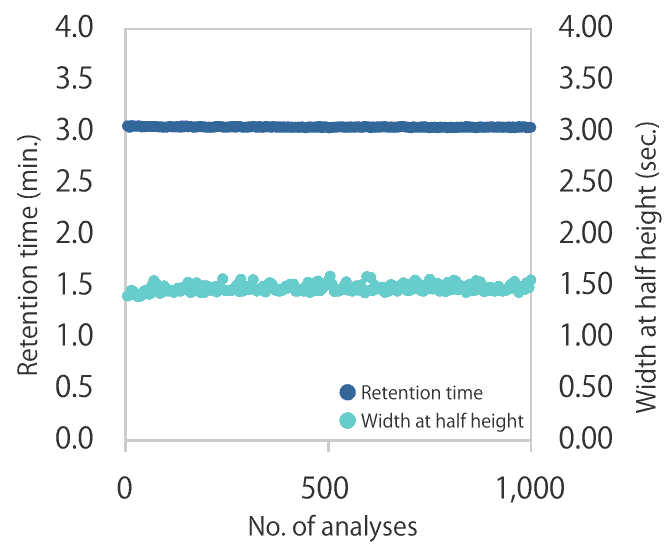 |
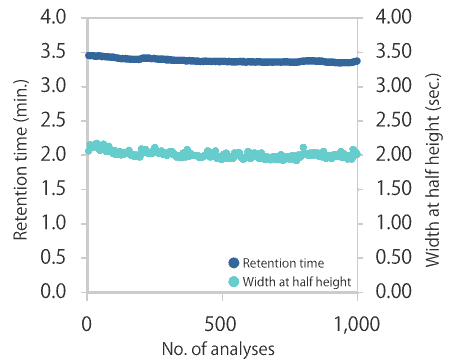 |
| Column size: | 2.1 mmI.D. x 50 mm |
| Mobile phase: | A: 0.1% TFA in water B: 0.1% TFA in acetonitrile B conc. 5 → 90% (0.00 - 3.00 min), 90 → 5% (3.00 - 3.01 min.), 5% (3.01 – 6.00 min.) |
| Flow rate: | 0.4 ml/min |
| Temperature: | 40°C |
| Detection: | UV 236 nm |
| Sample: |
Amitriptyline (0.2 mg/ml)
Inj. vol.: 1.0 µL
|
Note on connector type
Our UHPLC columns use the same connectors as Waters UPLC® (UHPLC) columns. This is different from our conventional COSMOSIL columns, which use the conventional Waters HPLC-compatible connectors. Attempting to connect an unsuitable fitting may result in it becoming stuck in the column.

Downloads
Ordering Information
| Product | Storage | Cat.No. | PKG Size | Price | |
|---|---|---|---|---|---|
| COSMOSIL 1.8C18-MS-II Packed Column (2.1 mmI.D. x 30 mm) | RT | 22132-71 | 1 pkg | 825.00 | Buy |
| COSMOSIL 1.8C18-MS-II Packed Column (2.1 mmI.D. x 50 mm) | RT | 22136-31 | 1 pkg | 825.00 | Buy |
| COSMOSIL 1.8C18-MS-II Packed Column (2.1 mmI.D. x 75 mm) | RT | 22137-21 | 1 pkg | 825.00 | Buy |
| COSMOSIL 1.8C18-MS-II Packed Column (2.1 mmI.D. x 100 mm) | RT | 22138-11 | 1 pkg | 825.00 | Buy |
| COSMOSIL 1.8C18-MS-II Packed Column (2.1 mmI.D. x 150 mm) | RT | 22139-01 | 1 pkg | 825.00 | Buy |
| COSMOSIL 1.8C18-MS-II Packed Column (3.0 mmI.D. x 50 mm) | RT | 22396-31 | 1 pkg | 825.00 | Buy |
| COSMOSIL 1.8C18-MS-II Packed Column (3.0 mmI.D. x 100 mm) | RT | 22397-21 | 1 pkg | 825.00 | Buy |


